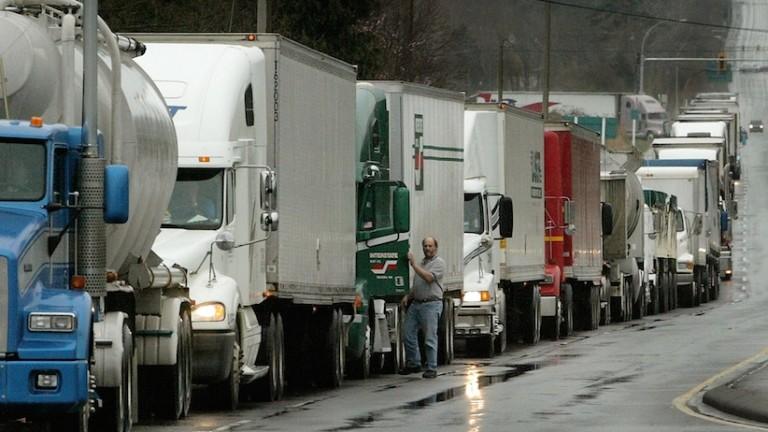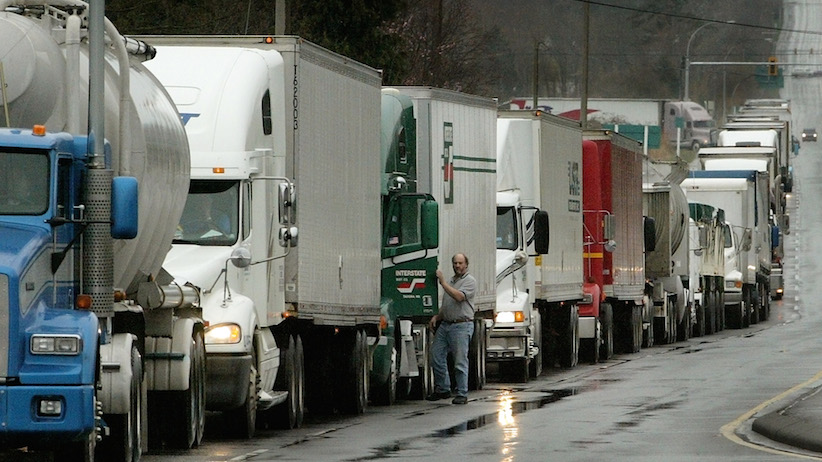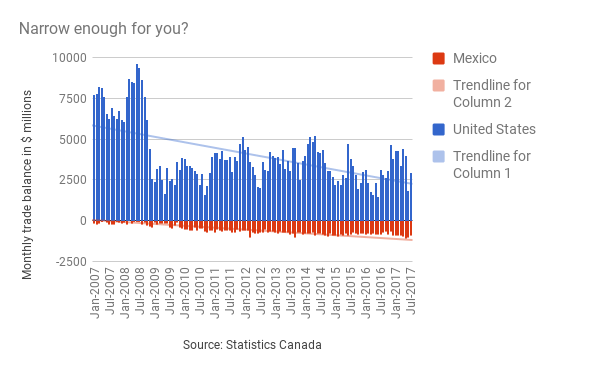New Canadian trade data complicates NAFTA negotiations
Econo-metrics: The July trade report also serves as a cautionary tale of what life could be like without NAFTA, as exports to the U.S. and Mexico suffered significantly

Share

Canadian exports of goods slumped in July, mostly because automotive plants closed for extended periods to retool, Statistics Canada reported on Sept. 6. Imports declined at an even faster rate, narrowing the country’s trade deficit with the world to $3 billion from $3.8 billion the previous month.
But more important these days than the headline number is the gap between exports and imports with the United States. President Donald Trump is obsessed with narrowing U.S. trade deficits with his country’s major economic partners, and the issue is an American priority at the renegotiation of the North American Free Trade Agreement.
The U.S. deficit with Canada widened in July, according to StatsCan’s latest figures.
Why the latest trade data matters
The office of the United States Trade Representative doesn’t say much under the leadership of Robert Lighthizer. So it was noteworthy when the agency offered a few snippets of commentary on the NAFTA talks via Twitter this week. One tweet stood out: “Addressing the U.S. trade deficit is a top priority in renegotiating #NAFTA.”
Most economists say deficits and surpluses don’t really matter: companies trade, not countries, and executives will make decisions based on demand and production costs. But Trump and some of his closest economic advisers see things differently. They argue that deficits are for losers. The Trump administration is set on using trade policy to correct what it sees as unfair trade. That will complicate matters for Canadian and Mexican officials at the NAFTA negotiations.
The trend
Canadian Foreign Affairs Minister Chrystia Freeland and Lighthizer are playing a game. Canada’s trade surplus in goods with the U.S. has narrowed considerably in recent years, and when you include services, the Canadian surplus becomes a small deficit. Freeland likes to say that these numbers suggest trade between Canada and the U.S. is “balanced.”
It’s odd considering the president made his name in real estate, but Trump doesn’t seem to care about America’s advantage in services. He talks about protecting factory jobs, and Lighthizer’s position is built around imports and exports of goods. At the start of the first round of the NAFTA negotiations, he reminded Freeland that over the last decade, the U.S. deficit with Canada exceeds US$365 billion.

Glass half full
Trade numbers are volatile. Canadian exporters had been on a good run, and the global economy generally is stronger, so there is little reason to panic over one bad month. Trade in automobiles and parts plunged in July as factories closed for extended periods to retool. Weaker commodity prices also were a factor, as StatsCan’s headline measure of trade is based on value. Volumes also dropped, but less severely. Imports of equipment held up, suggesting businesses are investing. That heralds stronger economic growth down the road.
Glass half empty
The July trade report serves as a cautionary tale of what life could be like without NAFTA. Exports to the U.S. and Mexico suffered significantly as automobile makers took a summer break. Trade in cars, trucks and parts should rebound in the months ahead as car makers get back to work. But we glimpsed this summer what happens when the free flow of goods in North America gets disrupted.
Bottom line
Let’s not forget that the trade numbers also have an important influence on monetary policy. Exports are key for the Bank of Canada, but policy makers likely will avoid reading too much into a single data point. The uncertainty over the NAFTA negotiations likely is a more important factor for the central bank and the economy generally. There’s nothing Freeland can do about the surplus with the U.S.—it’s determined by supply and demand. It’s just unfortunate the Trump administration doesn’t see it that way.